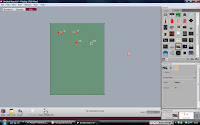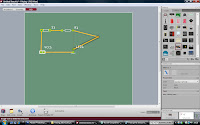The Spray paint ( yellow works best )
The Plain Copper Clad Board
So when you bring the mirrored PDF file from Fritzing and put it into the lazer cutter you are aiming to remove the paint from the areas where you do not want copper on the PCB. So therefore leaving the paint over the copper you want to keep. I would highly recommend you do a test piece on card to ensure that it is working correctly.
For settings i used 50 power and 50 speed, but it varies heavily with others using 70/70 and 90/40. So it may take a second pass. Be sure that it is all the way through the paint to make sure the Acid bathing works properly.
This one needs to go in the laser cutter again as the copper does not show through properly.



